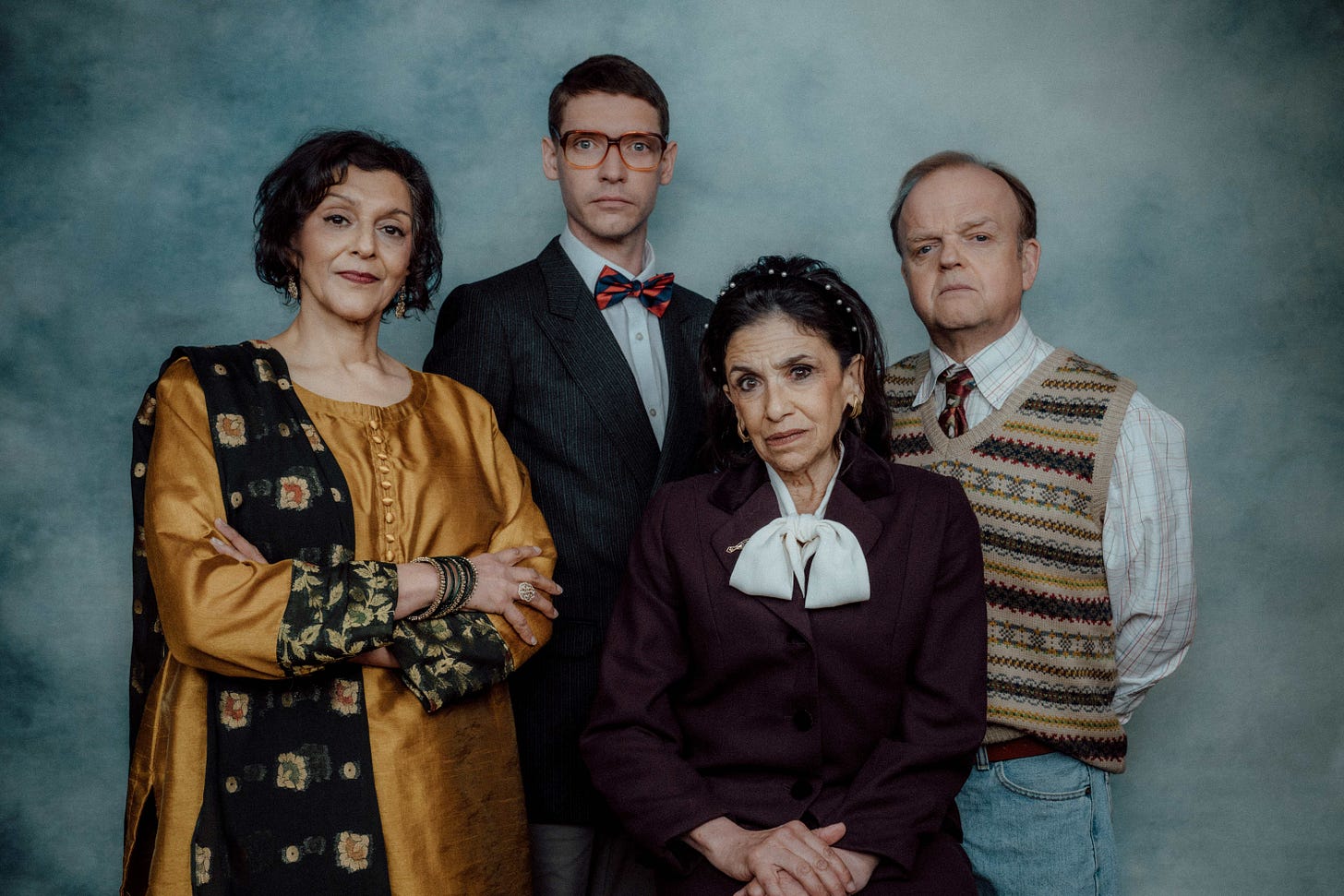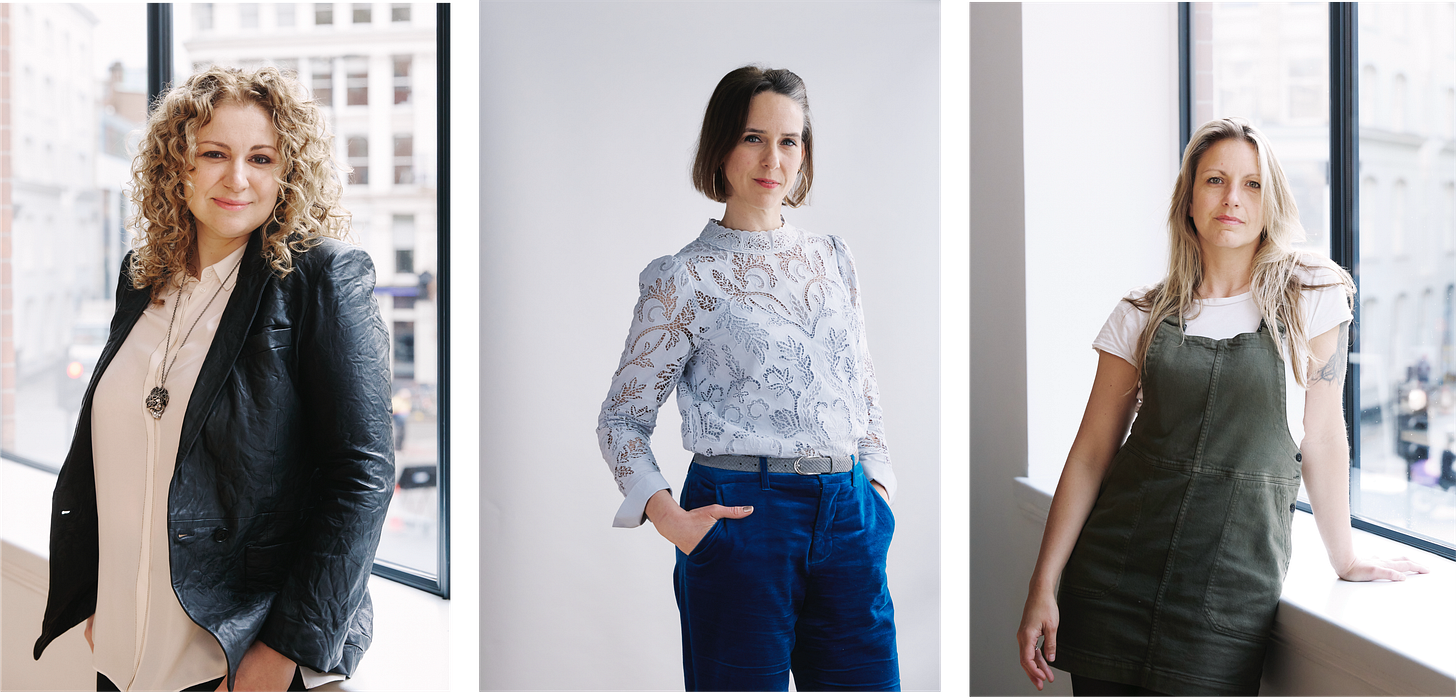'Am I in control?'
A look inside Storehouse: the vast newspaper store in Deptford now home to an immersive show about disinformation and manipulation
By Emily Jupp
In Deptford, south east London, at the edge of the Thames, in a place between where police boats trawl for bloated corpses and the Quietway 1 cycle route passes by the Dog and Bell, there’s a whole area that, if you look at it on Google maps or peer through the gaps in the high fences, is just empty.
Land. In zone two. Scrubby, muddy land. The conurbation of Canary Wharf sits on the bank opposite. Surrounding the land are high-rise flats – both private and council. Zoom in and you’ll see a big warehouse sits in the middle, seemingly with no access routes. This 9000-square-metre facility is where the paper used to be stored for media tycoon Rupert Murdoch’s printing presses, which relocated east of the river in January 1986, sparking a year-long face-off with the unionised workers who had controlled the Fleet Street press. While Murdoch won that particular battle, the ultimate killer of print media had already been conceived: the World Wide Web was born in 1983 – and this vast repository of knowledge, with all its division, democratisation and king-making, is the starting point for a debut immersive show from arts production company Sage & Jester, held within this, the old paper storehouse.
At the press junket, where they share snippets of a couple of scenes of STOREHOUSE (the immersive show), I begin by being led through the red-painted entrance of Storehouse (also the name of the venue). We head down a very long corridor flanked by metre-wide white pipes, all branded with a ‘NEWSPRINT STOREHOUSE’ emblem. The ceiling here is canvas but when the canvas stops, I can glimpse a vast, cavernous space above, with beehive-like networks lit amber and yellow. The whole of the Storehouse is the size of two football pitches and the ceiling is 15 metres high; within this cavernous space, a series of pod-like rooms have been created at different levels.

We are herded into a green room with a portrait on the wall of the actors Meera Syal, Toby Jones, Kathryn Hunter and Billy Howle. They are the voice-actors for the show and represent the ‘founders’ of the Storehouse project. We are then led to the first scene. It’s a classroom-cum-lab with lit-up honeycomb shapes on the walls, alongside a slogan spelt out in silver capitals: ALL INFORMATION IS SACRED. We are given time to rifle through the notice-boards, kitchenware, charts, books – every surface is littered with potential clues to the story.
Here, we meet a ‘book-binder’: a kind of bumbling physics professor, played by Rob Leetham. He explains that all information since the birth of the internet has been stored in this storehouse. This cumulation of information and data was leading up to an event called the ‘Great Aggregation’ that would lead humanity to a ‘Truthtopia’: an existence where there would be no conflict or divisions, because we would all understand an agreed version of the truth. Except it hasn’t happened…
Sage & Jester (formerly Medea Creative Productions, formed in 2022) is owned by Liana Patarkatsishvili, daughter of Georgian businessman Arkady Shalvovich “Badri” Patarkatsishvili, who founded IMEDI, one of Georgia’s biggest independent television stations. IMEDI’s independent newsroom was taken over on the orders of the government of Mikheil Saakashvili in March 2010. It aired a fake news report claiming Russia had invaded. The immediate effect was to cause people to flee their homes in panic – and the long-lasting impact was a deep-felt distrust of the media.
Patarkatsishvili’s mission is to unpick distrust of traditional news, along with the spreading of misinformation and ‘alternative facts’ that now pervade our daily lives. STOREHOUSE is one of a series of artistic endeavours in the pipeline for Patarkatsishvili.
“It is really a mammoth effort just to think about it. We’re trying to discuss the issue of disinformation in an entertaining, creative way,” she says. “It’s quite a heavy, weighty subject, potentially boring as well. How do you make something that we believe is so very important, discussed very widely in society? How do we make it tap into your feelings, make you feel that it's relatable and that it has everything to do with how you live your life, without putting too much weight on you?” STOREHOUSE is her answer to that question. An immersive show that is playful, engaging and light, but asks big questions about truth, censorship and what to believe in.
It’s not free-roam; a small audience of about 15 people at a time is led through the spaces inhabited by different characters, who you can interact with and ask questions of. We move on through a fluffy corridor made of sheep’s wool into a pod-like room where the wool is threaded together in thick trellises. It seems to grow over the books that sit in its crevices and throbs with light like a living creature.
“The storehouse was always conceived as this organic living entity and has grown into a being with its own agency,” explains Alice Helps, the production designer, who joined the team in January. “There’s lots of nods to mycelium networks.” Mycelium is the underground root-like network of mushrooms, that is strong and spongy and can link up with other root networks to share resources. But it also has applications in the sustainable design world.
“We’ve been consulting with a company called Re:Right Design,” she says, “and they built the mycelium dome at Glastonbury. They also grew the bioplastics that we use in some of the spaces, like the lights on the book-binder space.” Those hexagons on the walls are made from plastics manufactured from bio-based polymers that are both recycled and recyclable, creating a closed loop system. In fact, many of the materials used for construction are recycled, organic or recyclable, or all three.
Onward I go, into the fluffy, mycelium-esque pods. Here, actor Elizabeth Hollingshead plays a woman who has been wearing the same uniform since 1983 and is getting quite sick of it. She is trying to hold together an organic library that isn’t functioning as it should. Her red-lipsticked smile conceals a nervous tension as she climbs ladders to meticulously record the data, in book form, as it arrives. This area smells damp, like a cave system and indeed, the pods lead from one to the next, with no natural light, turning from wool to wicker domes. Again, paperwork and books spill over the tables. A kind of paper slot-machine creates random clickbait headlines when you pull the lever: “Toddlers. Expose. Drugs.”
Another unusual element of this ambitious project is that Storehouse didn’t have just one writer. Instead, in August last year, they decided to open up the story to a writers’ room. “We had a brilliant writer, but it was one voice. We needed to have different genders, different nationalities, different sexualities,” says Sophie Larsmon, Storehouse’s Creative Director. “We have playwrights like Tristan Bernays and Sonali Bhattacharyya, who have got solid theatre narrative bones; Katie Lyons, who is highly experienced in the immersive world. Then Caro Murphy who is an interactive specialist. They recently worked on that big Star Wars: Galactic Starcruiser [a Live Action Role Play experience at Disney World] and Catherine Bond. She is an amazing clown improviser-performer. So she brought that element, particularly to the bookbinder characters, who need to be humble and bumbly. Then we had Rhik Samadder. He was an actor and playwright for a long time, but he’s actually moved into journalism now. We wanted someone with their finger on the pulse of current affairs.”

I only had a taster of STOREHOUSE – but in the full experience of the show, the small audience groups continue to move through this vast space, uncovering more, until the separate groups merge and merge again, coming together to witness the final scene. When the show is over, the audience then spills out into a bar with a view across the river to Canary Wharf. The hope is that the experience will prompt an ongoing conversation about how to check and verify the information that seeps into our lives.
“Hopefully, we leave with a filter we can start applying in our lives more. Thinking; ‘Where does this information come from? Why does it come in this way? How does it make me feel? Am I in control, or is someone else in control?’ says Patarkatsishvili. “So it’s quite an ambitious task – and I think it just was absolutely paramount to have it come alive with a set and with incredible acting. So people don’t just go away with having listened to the story, but having lived it and felt it.”
STOREHOUSE runs till 20 September













